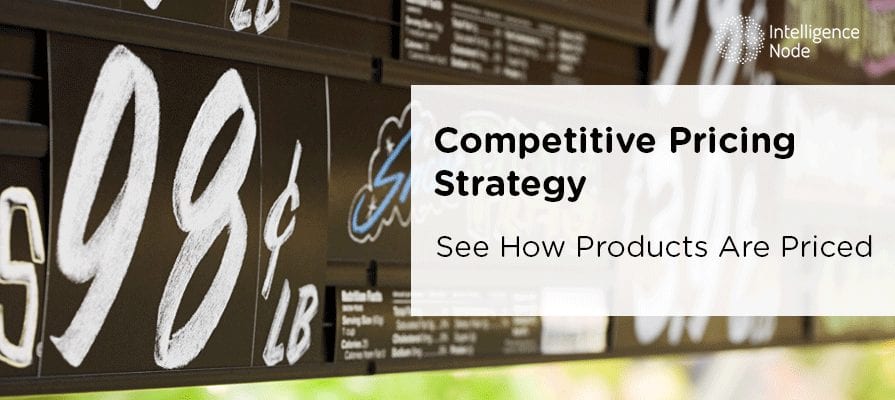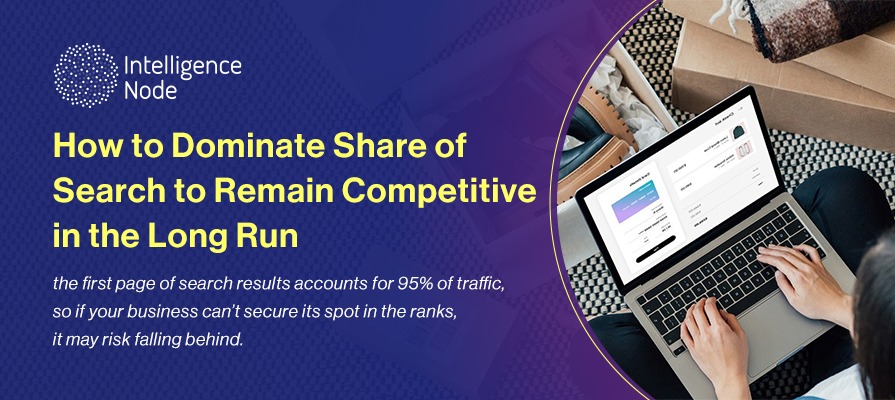Businesses often spend an inadequate amount of time strategically thinking about their product prices. But price strategy deserves a lot more attention, especially for online brands and retailers. According to Oberlo, there will be more than 2.1 billion online shoppers in 2024. It is a given that they will comparison-shop. This means if the products aren’t priced right, that is a missed opportunity right there for many businesses. To get the best price, price optimization is the way to go. What is price optimization? In basic terms, it is gathering data and drawing smart insights from it to set a competitive price for your product while meeting your business goals.
What is Price Optimization in Retail?
Here’s an example to help you better understand what price optimization is: Let us say you sell baking supplies and your goal is to drive profits. Rather than following your intuition and setting sky-high or too low prices, you will gather data, analyze the data, and then determine the best price for your products. The optimized price is one that your customers are willing to pay and you also get a good profit margin. An optimized price can mean a higher price than the initial price or it can mean a lower price. It all depends on the factors at play and the data you gather about customers, market, seasonality, competition, and so on. Price optimization is an ongoing process and for you to meet your goals you need to constantly evaluate and update your prices.
While many might confuse price optimization with dynamic pricing, these two terms aren’t synonymous. You can use any pricing strategy to optimize pricing and dynamic pricing is one such pricing strategy. In that way, dynamic pricing is a subset of price optimization. Price optimization takes into account numerous factors to get a price point for a product and the frequency of price changes isn’t set in stone. In dynamic pricing, price fluctuations and changes happen very frequently and need constant monitoring. Dynamic pricing takes the reactive approach because it changes in response to market or competitive changes.
Price Optimization Models
According to Bain & Company, ‘Price optimization models use mathematical algorithms to analyze price changes and their effect on consumer demand while factoring in cost-related information and inventory levels. These models are used by businesses to forecast future demand for products and services, maintain efficient inventory levels, and build promotional strategies among others. They use data from the competition, customers, and market changes to determine the best price for products and services. The models enable businesses to take a more calculated approach toward maximizing revenue while keeping the customer satisfied regardless of the market situation.
Why is Price Optimization Important?
An Intelligence Node survey found out that almost 94% of shoppers compare prices at some point while shopping online. This trend has made price optimization indispensable to be able to provide competitive prices and convert digital shoppers. Price optimization benefits are many. It allows you to enjoy better profits and revenue because you are able to drive purchases. When customers think they are paying the best price possible, it enhances customer satisfaction which in turn leads to loyalty and repeat purchases and an improved brand image. Price optimization keeps your business safe and your customers happy. You don’t need to offer products at deep discounts and take a profit cut. Instead, you get better margins as you base your price on smart decisions. It eliminates guesswork and uses real data that matters. This means actionable insights that make a big, lasting difference.
A Simple 6-Step Approach to Optimize Prices
In the below section, we discuss the basics of pricing and revenue optimization. Note that this should be seen as a bare bone framework for price optimization and will work differently for different businesses depending on a variety of factors.
1. Do a Complete Business Analysis
It all starts with determining your business’s weaknesses and strengths. You will need accurate comprehensive data across current economic conditions, seasonal conditions, historical data, product availability, operational costs, demand, and competitor prices. How does all this tie in with price optimization? It will show you how all these factors affect prices, demand, and profitability. This will enable you to see the bigger picture of where you stand in the market.
2. Perform Customer Analysis
This ties in with the previous step because it is about gathering data as well. You need to know your customers and their perception of your brand. You need to look at customer reviews, demand data, customer sentiment, market trends, and supply data. This data steers you towards the important changes to be made to both prices and product features. In addition to this, you can get additional details from customers through surveys or interviews. Although a rigorous step, this data will go a long way in determining prices that convert.
3. Identify Value Metrics
It isn’t all about pricing at the end of the day. It is also about the perceived value. A value metric is a way to measure how your customers value your products and which features they value the most so that you can optimize prices accordingly. It is important to align prices with customer needs. At this point, you need to think about how you are going to charge your customer for your product (per user, per item, or tiered) based on what they value most in your offering.
4. Execute Comprehensive Data Analysis
When all data has been collected and value metrics have been determined, it is time to analyze the collected data. If you are using a machine learning tool then it will reveal patterns to you according to customer segments. For instance, it will reveal what customer segments are willing to pay. What promotions work the most with your customers. Which demographics find which offerings the most valuable, and what prices work for what products. It will spot trends and provide smart price recommendations that you can use to optimize prices accurately.
5. Define Pricing Strategy
To start setting or altering your prices, you need to finalize on a pricing strategy that suits you. The goal is for it to align with your business objectives and what you want to achieve with price optimization. If you are a brick-and-mortar retailer and want to compete with online retailers then you can opt for value-added pricing and if you are a fashion or CPG eCommerce brand or retailer, dynamic pricing strategy might suit you the best.
6. Set and Monitor Prices
When all the previous steps are done, it’s time to set the price for your products. A market change is inevitable which means you might need to alter your prices on an ongoing basis. The frequency of price monitoring and price adjustments depends on your industry, competition, and goals. You should pay close attention to how your customers respond to the price change and analyze the results before changing your product prices again.
It is vital to understand that price optimization isn’t always about lowering your prices. It is about analyzing how your brand is perceived and understanding when your customers are ready to pay more and when they want low prices. Michael Kors in 2016 decided to protect its brand equity by pulling off its products from certain stores because the brand didn’t want to offer its products at big discounts. Being a luxury brand, this strategy worked for Michael Kors and they recorded higher revenue than predicted.
Why Machine Learning is an Important Part of Price Optimization
Price optimization and machine learning go together because in a dynamic market, precision is the key and there is no scope for error. Machine learning is all about efficiency and when used for price optimization, it is a perfect fit. Optimizing prices manually is not just tedious and complicated, but can also lead to manual errors and delays. And when we are talking about thousands of SKUs, manual optimization just doesn’t make the cut. Machine learning makes it all easy, fast, and accurate. Its automation and speed prowess cannot be beaten. Its high accuracy means reliable output that key decision-makers can work with without a doubt. You can use machine learning to your benefit because it adapts and learns which is its biggest asset.
Machine learning has already seeped its way into price optimization to make it easier, faster, and better. Amazon is an excellent example because it changes prices of millions of products multiple times every day. Amazon couldn’t have done this manually. AI made it possible. You can use machine learning to discover trends and patterns so your business can capitalize on them. You can test scenarios that can give you better insights so you can act on those predictions. It can be used to compare performances against competitors, and derive valuable insights from global data in real-time, leading to higher margins, better conversions, and fast returns on investment. Machine learning isn’t just for online retailers and brands but for omni-channel and brick-and-mortar retailers as well.
What to Look for in a Price Optimization And Management Software
While choosing a price optimization solution, you want to go with a software that is scalable, needs minimum integrations, and utilizes state of the art technology. The retail landscape is growing in complexity and the only way to weather the storm is to use an advanced price optimization software solution. Here is what you should look for in a good, long-time price optimization software:.
Is AI-driven
AI-driven capabilities and machine learning powered technologies are a must in a smart price optimization solution. While a simple software solution can still work, it will lack the speed and accuracy of price updates that an advanced, AI-driven solution can offer. With an AI-driven solution, you can also get smart price recommendations and automated price adjustments that will help you update your product prices instantly.


Allows Testing Scenarios
You should be able to test scenarios. Whether it is back-testing to see how pricing strategies would have had different results in terms of customer response, or partial testing for a small set of your products, testing allows you to experiment with different scenarios until you find the strategy that best suits you. A software that enables you to test ‘what if’ scenarios enables you to optimize your prices better in the future.
Offers Real-time Monitoring
An advanced price optimization software must offer you the capability of monitoring prices in real-time. Outdated or historical data won’t suffice especially if you are an e-retailer. An ideal price optimization software will give you real-time insights with frequent refresh rates so you have the latest information with you at all times. You can then make quick and informed decisions and take advantage of gaps left by your competitors. Real-time pricing data will also ensure that you are always one step ahead of your competitors.
Provides Smart Insights
Insights are vital for decision-making. When choosing a software tool for optimizing price, it is essential to choose one that can provide smart, data-driven insights that you can act on. For instance, the product should give you insights on trends, patterns, and which products you can upsell and cross-sell. It should tell you which products are out of stock for your competitors or when to increase your product prices. This can enable better decision-making that will drive profitability and product level margins.
Offers Automated Price Updates
A smart price optimization software should allow you to automate price optimization based on predefined rules. It should give you the flexibility to update or delete rules at any time and alter your competitors or products to track with ease. Moreover, it should have the capability to automatically update prices on your websites whenever there is any price change in the system based on competitor prices or any other preset parameters.
Is Price Optimization Software Easy to Set Up and Use
You need a price optimization software that can be seamlessly integrated with your internal systems and does not need big infrastructure to operate. Opt for cloud based SaaS platforms and scalable APIs that can be set up with minimum effort and can enable data access in any preferred form. Ensure your software is easy to use and offers a unified dashboard, comprehensive reporting capabilities and sends you important notifications so you do not miss out on any price movements in the market.
You can find many price optimization tools but the best will enable you to make the smartest decisions by effectively digging through tons of data. It will give you the freedom to set your pricing rules and automate pricing when you wish. Intelligence Node’s AI-driven price optimization solution can empower businesses with data-driven insights and smart price recommendations and give you the freedom to test and implement the right prices at the right time. This ensures you don’t lose out on your current customers, win new customers, grow margins, and never miss another opportunity. Price optimization isn’t an option anymore. It’s a necessity that businesses need to focus on now more than ever.




